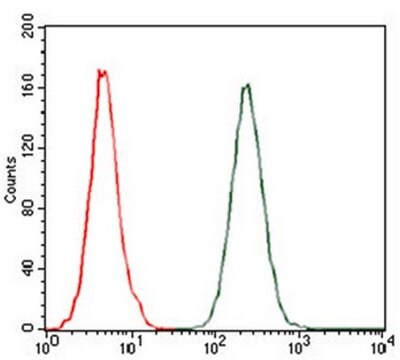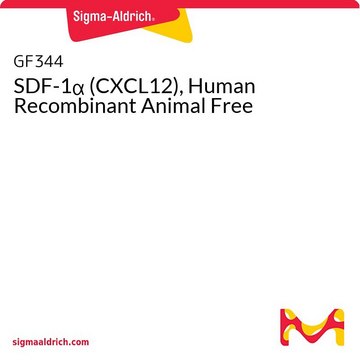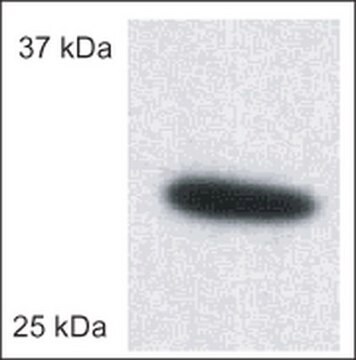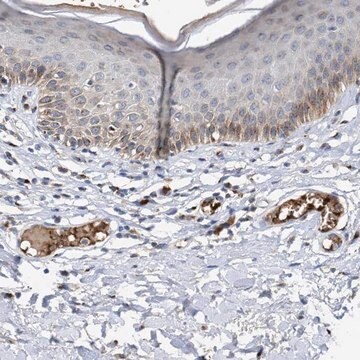AB1834P
Anti-Monocyte Chemotactic Protein-1 Antibody
Chemicon®, from rabbit
Sinonimo/i:
MCP-1, MCAF, CCL2
About This Item
Prodotti consigliati
Origine biologica
rabbit
Livello qualitativo
Forma dell’anticorpo
affinity purified immunoglobulin
Tipo di anticorpo
primary antibodies
Clone
polyclonal
Purificato mediante
affinity chromatography
Reattività contro le specie
rat
Produttore/marchio commerciale
Chemicon®
tecniche
ELISA: suitable
neutralization: suitable
western blot: suitable
N° accesso NCBI
N° accesso UniProt
Condizioni di spedizione
wet ice
modifica post-traduzionali bersaglio
unmodified
Informazioni sul gene
human ... CCL2(6347)
Specificità
Immunogeno
Applicazioni
Western blot: 0.1 - 0.2 μg/mL, this dilution should offer a detection limit of 1.5-3.0 ng/lane, under either reducing or non-reducing conditions.
Neutralization: To yield one-half maximal inhibition [ND50] of the biological activity of rat MCP-1 (100 ng/mL), a concentration of 4.0-6.0 μg/mL of this antibody is required.
Optimal working dilutions must be determined by the end user.
Inflammation & Immunology
Cytokines & Cytokine Receptors
Stato fisico
Stoccaggio e stabilità
Altre note
Note legali
Esclusione di responsabilità
Non trovi il prodotto giusto?
Prova il nostro Motore di ricerca dei prodotti.
Codice della classe di stoccaggio
13 - Non Combustible Solids
Classe di pericolosità dell'acqua (WGK)
WGK 3
Punto d’infiammabilità (°F)
Not applicable
Punto d’infiammabilità (°C)
Not applicable
Certificati d'analisi (COA)
Cerca il Certificati d'analisi (COA) digitando il numero di lotto/batch corrispondente. I numeri di lotto o di batch sono stampati sull'etichetta dei prodotti dopo la parola ‘Lotto’ o ‘Batch’.
Possiedi già questo prodotto?
I documenti relativi ai prodotti acquistati recentemente sono disponibili nell’Archivio dei documenti.
Il team dei nostri ricercatori vanta grande esperienza in tutte le aree della ricerca quali Life Science, scienza dei materiali, sintesi chimica, cromatografia, discipline analitiche, ecc..
Contatta l'Assistenza Tecnica.








